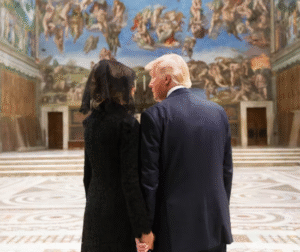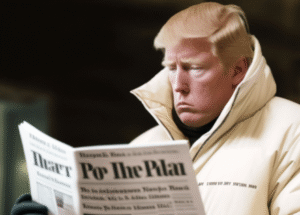$SPY $DXY $VIX
#economics #republican #financialmarkets #GOP #policy #marketsentiment #usdollar #inflation #macroeconomics #politics #stockmarket #fiscalpolicy
Can economic theories and models properly quantify the potential effects of a Republican victory, particularly one driven by the prominent figure of Donald Trump? Economists and market analysts alike are grappling with this question as they strive to predict how a Trump-influenced administration would affect the sprawling web of macroeconomic forces. The challenge has proven to be more complex than typical electoral predictions, mostly because of the unpredictability related to potential policy swings and the strong emotional charge Trump injects into both partisan rhetoric and market sentiment.
During a typical Republican victory, market expectations would generally favor business-friendly policies such as deregulation, tax cuts, and a rollback of government intervention in the economy. These measures often spur optimism among investors, pushing key market indices like $SPY higher. However, with Trump at the helm, the variables become much harder to predict. There’s uncertainty surrounding potential trade wars, a contentious relationship with the Federal Reserve, and possible fiscal stimulus packages that hinge on unconventional negotiations. These factors can send mixed signals to investors, creating volatility, which can manifest clearly in metrics such as the $VIX volatility index. Additionally, Trump’s “America First” policies often favor a stronger U.S. Dollar ($DXY), although prolonged trade tensions could serve to suppress global economic growth, mitigating some benefits of a stronger currency.
From a broader economic perspective, Trump’s presidency has shown the potential to ignite inflationary and deflationary forces almost simultaneously, depending on which sector you’re examining. His approach to deregulation often boosts specific industries—such as energy—but his tariff battles have a downside, creating supply chain disruptions that lead to price spikes. Inflation remains a key concern for most market participants who recall the uncertainty surrounding the Federal Reserve’s hesitant interest rate hikes during Trump’s first time in office. With inflation data closely linked to consumer behavior and overall market performance, trying to model Trump’s next economic influence has sent economists on a wild goose chase. Ambiguity exists not just in what policies Trump would champion but how consistent his policy applications would remain in practice.
Lastly, economist tools like econometric models struggle with constants and projections when faced with a wildcard like Trump. Markets often price in stability over either Republican or Democratic control because most administrations—despite the rhetoric—don’t stray too far from standard economic principles. But with Trump, it’s hard to predict what fiscal policies will hold, leaving investors with limited confidence regarding long-term trends. Trump’s rise once again leaves economists scratching their heads, not just because of the policy uncertainty but also because his leadership represents a fundamental departure from the political norm. That makes the task of calibrating his impact incredibly challenging for predicting how $SPY, bond markets, or even smaller-cap stocks might fare under a Trump-driven economy. It seems that traditional economic models may need to evolve to factor in unconventional policy approaches and sustained uncertainties.







Comments are closed.